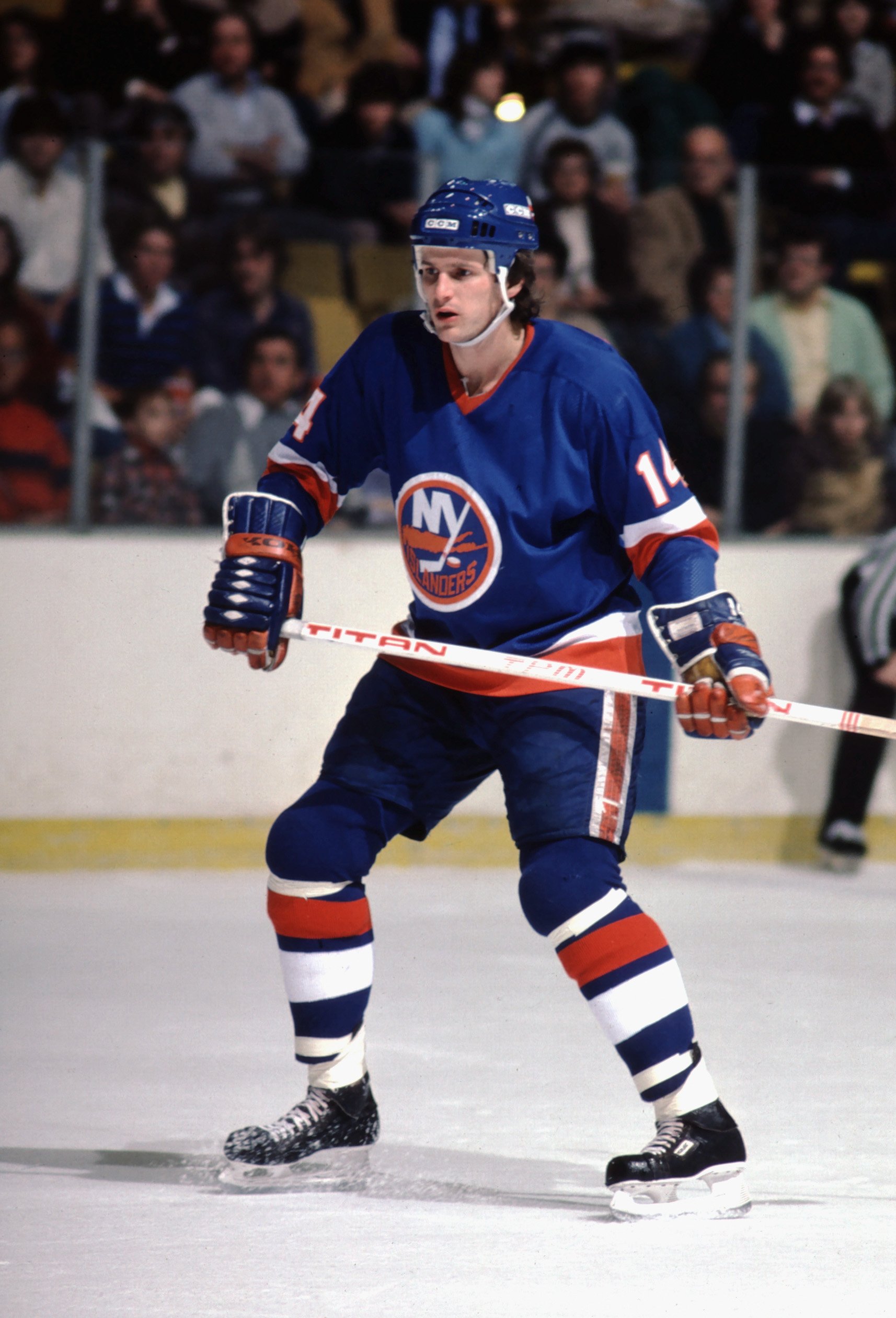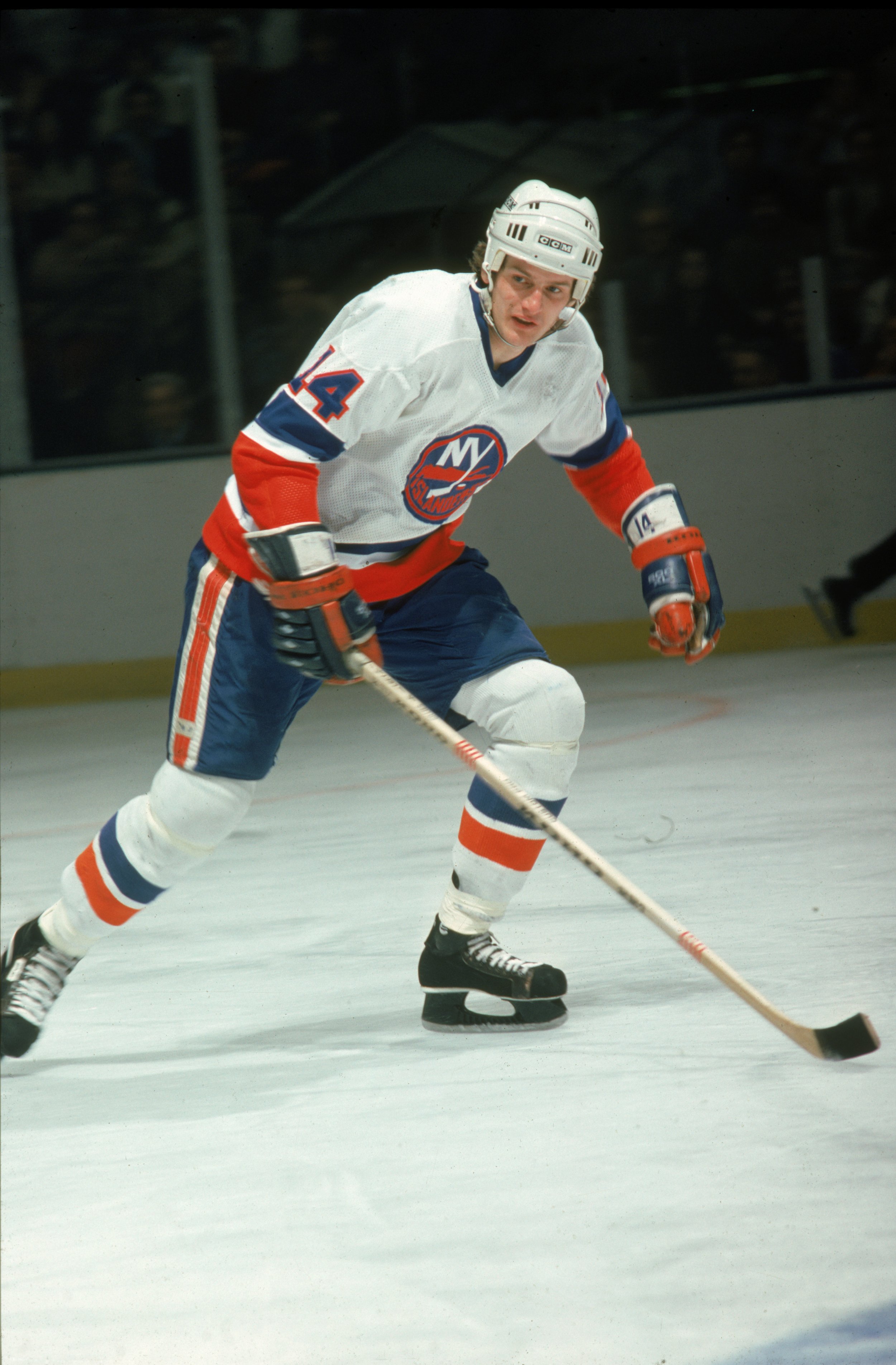Bob Bourne: Kid Lightning
By Stan Fischler
It would not be a stretch to call Bob Bourne "The Quintessential Islander."
The fleet forward from Kindersley, Saskatchewan could do it all, and that explains why he's among the precious few to have been inducted into the club's Hall of Fame.
"Bobby had the intensity, the skill, the perseverance and fighting spirit that any team needs to be a winner," said goalie Glenn “Chico” Resch who was a teammate from the day Bourne arrived in Uniondale circa 1974.
Originally drafted by the Kansas City Scouts, Bourne had a tough decision to make before settling on a hockey career. He was a baseball star in his native province and could have signed with the Houston Astros.
"I played a lot of ball with (Isles teammate) Clark Gillies," Bourne remembered, "and we did well. But like Clarkie, my heart was set on being a hockey player, and I was thrilled to be moved to Long Island in that trade from KC"
In September 1974 the Islanders and Scouts exchanged players in a deal that received precious little attention at the time.
Bourne was sent to the New Yorkers in exchange for defenseman Bart Crashley and the rights to another defender, Larry Hornung.
"It was one of the best deals I ever made," said GM Bill Torrey, "although it was hard to tell at the time because Bourny needed time to refine his game."
Torrey assigned Bourne to the minors for the 1975-76 season and it was the best thing that ever happened to the scrappy skater.
When Bourne returned, he brought a lot more to the table than goals, assists and points.
"Bob needed to get his game together," said coach Al Arbour. "Once he got back to us on the Island, there was no stopping his progress."
The career turnabout took place over the 1976-77 campaign and it significantly coincided with the club's ascent to the National Hockey League's elite level.
"Bobby was a fighter; that's for sure,” Resch said. “You can check his penalty minutes and see that his numbers were right up there with the best of the power forwards."
Bourne's inclination to drop the gloves when necessary never diminished his scoring proclivities. He scored at least 30 goals three times and between 20 and 30 red lights three times.
"Bourny was a big reason why we won four-straight Stanley Cups," added Arbour, "and especially that spring when we beat Edmonton in four-straight to make it four in row."
Despite being surrounded by Hall of Fame forwards Mike Bossy, Bryan Trottier and Clark Gillies, Bourne led all the Isles in scoring during the 1983 playoffs with 28 points (8-20). He also proved to be one of the leaders in the clubhouse.
"We all hated to lose," said Gillies, "but nobody I knew wanted to win more than Bob."
It helps explain how frustrated Bob was during the Isles’ "Drive For Five" in the 1983-84 campaign. Hampered with injuries -- he was limited to eight games -- Bob was ruled out of the lineup when the 1984 Final Round against Edmonton began at Nassau Veterans' Memorial Coliseum.
Bourne confessed that he desperately wanted to get back into the lineup. But coach Arbour -- concerned that his wounds would be worsened by the intense play -- refused to chance further injury and kept him sidelined.
"It was tough to take," Bourne allowed, "but Radar was doing what he thought was best for the team and my own good and welfare."<
It's only conjecture, of course, but some media members long contended that the Islanders would have taken Edmonton in the 1984 Final had Bourne been as healthy as he had been in previous playoffs, especially the previous season when he helped rout Wayne Gretzky and Company in a four-straight sweep.




It was in that postseason that Bourne scored one of the most memorable goals in NHL history. The date was April 20, 1983 and the opponent was the Rangers. The arch-rivals were tied two games apiece in the Prince of Wales Division Final when Bob squeezed his "Miracle Mile" into 200 feet of ice.
The Isles were leading 4-1 late in the second period when a Blueshirts attack was blunted in the Isles end. Defenseman Tomas Jonsson captured the puck behind the Isles net and backhanded a pass to Bourne who already was skating full speed ahead.
After rounding the pipes, he bobbed and weaved past defending Rangers forwards as the standing room crowd gasped in amazement. There, inside the Blueshirts’ blue line, defensemen Reijo Ruotsalainen and Barry Beck attempted to thwart the blur that was Bourne.
They didn't have a chance.
With consummate ease, Bob left them in his rearview mirror before depositing the rubber behind goalie Ed Mio. SportsChannel's play-by-play ace Jiggs McDonald orated, "...end to end Bob Bourne did it all by himself."
In the Rangers' booth, MSG Networks' John Davidson put it another way: "It was a work of art."
McDonald's sidekick, Ed Westfall, added the perfect postscript: "This will live in the minds of us for a long time."
A year later someone asked Bourne if he ever stopped to watch a video replay of his masterpiece of motion.
"I watched it a dozen times," he concluded, "and I still got excited."
That rink-length rush will go down as the goal Bob Bourne will never forget, but it was only one of dozens of thrills he provided over a ten-year career with the four-Cup dynasty.
It's also just another bit of evidence why many consider Bob Bourne "The Quintessential Islander."
